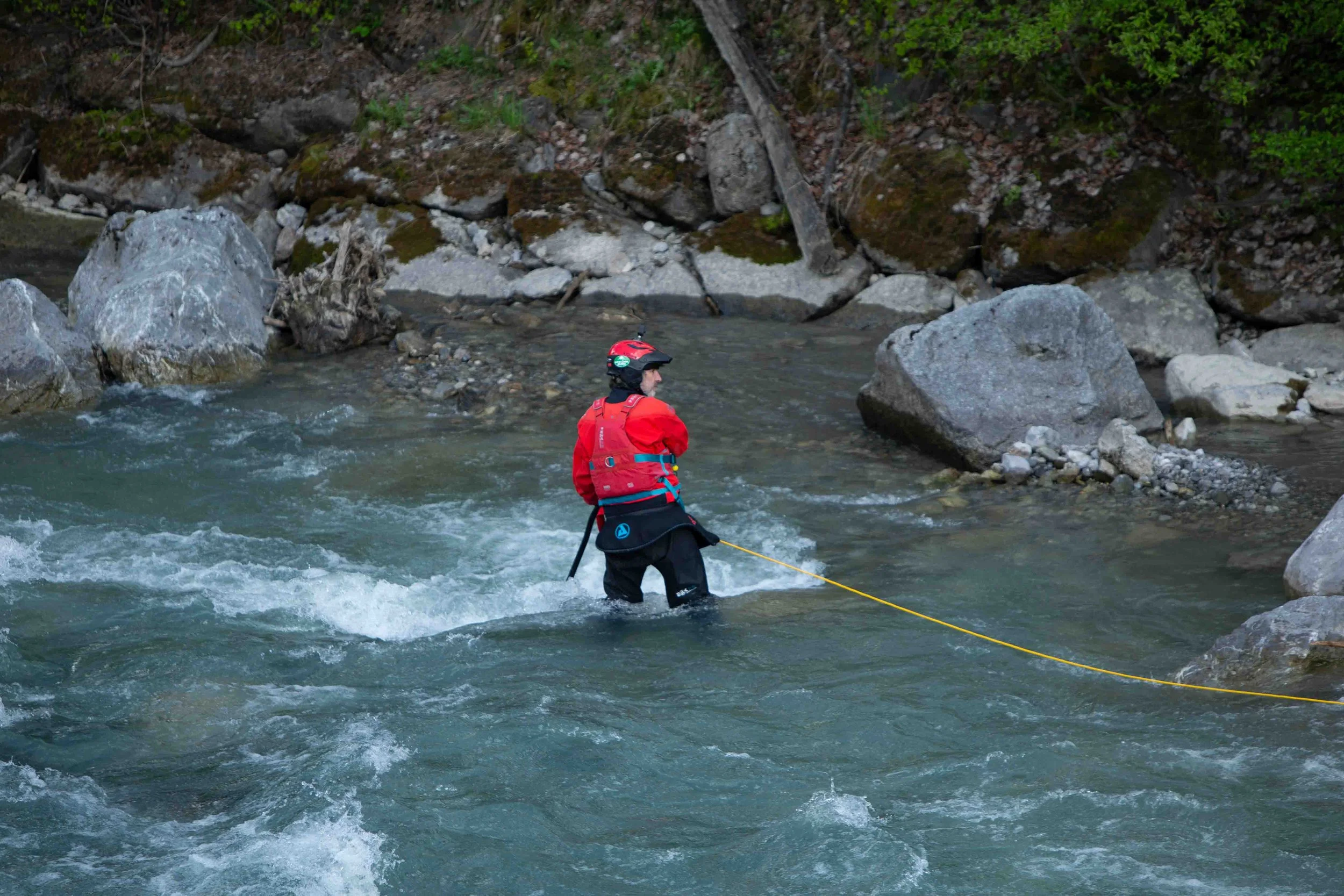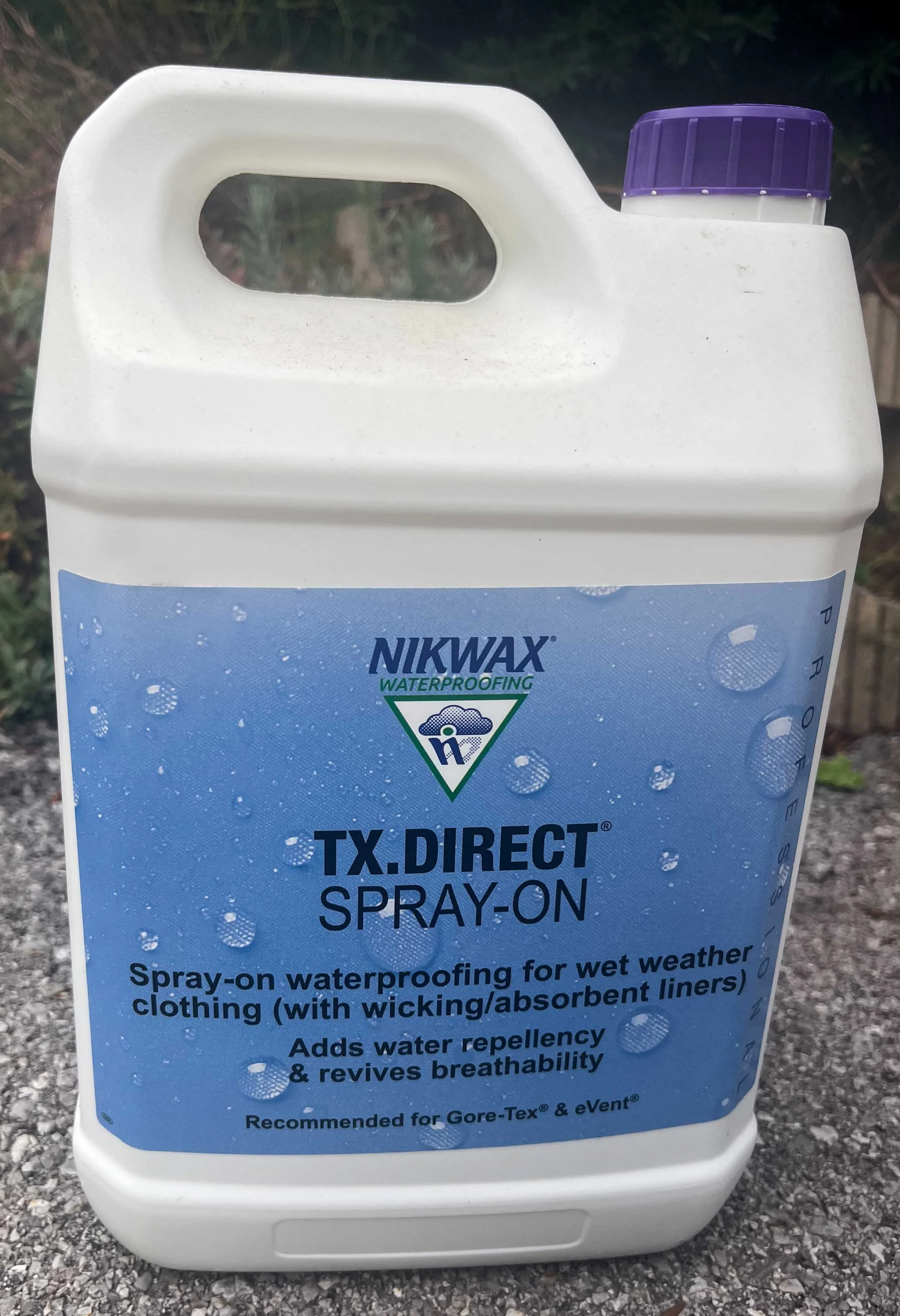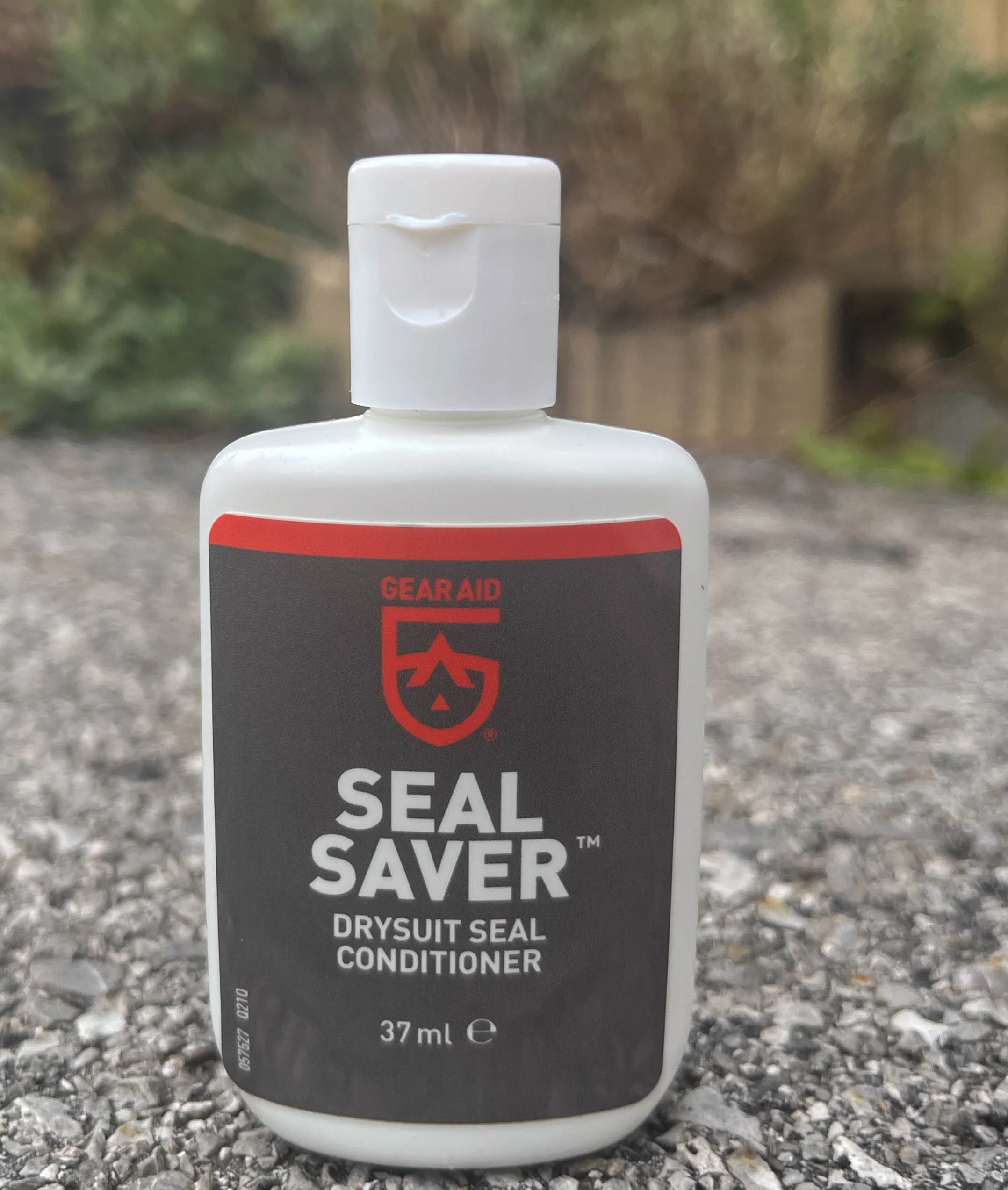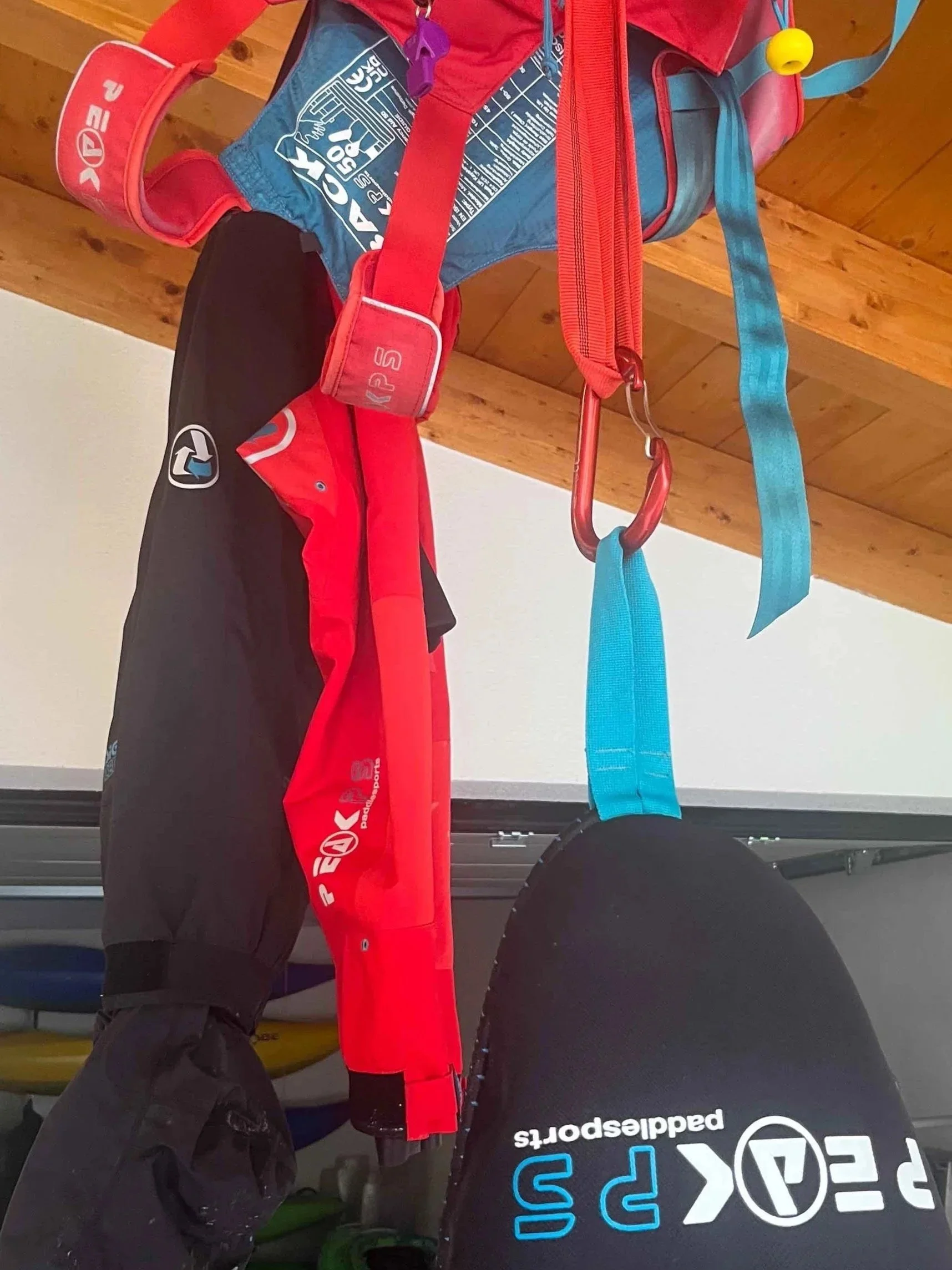Prolonging the life of your white water dry suit
A white water dry suit is the standard and has become quite normal for a kayaker to wear. Whether you have just finished a beginner course, a class 2 kayaker or heading up the grades of difficulty in white water, a dry suit has become an essential piece of equipment.
Not only is it an essential piece of equipment to use on the river, apart from a kayak, it is the next most expensive piece of kayaking apparel you will purchase!
So here are a few top tips to prolonging the life of a white water drysuit….
Washing
It is extremely important to wash your white water dry suit. After spending a considerable amount of time in it, dirt and sweat can build up both inside and on the outside. This starts to make the breathability of the material become less efficient. If you are getting a feeling of being wet inside your dry suit, it may not be leaking, it could just be that the material can no longer wick away the moisture you are producing while paddling or the nervous energy you produce when kayaking a river or harder rapid than that you are used to. For instance, if the outer fabric absorbs water, your dry suit can lose up to 70% of its breathability.
The dry suit can be washed in a bucket with soapy water and then rinsed out thoroughly and left to dry (see further down about drying the suit). Alternatively you can put it in the washing machine on a short cycle, you can use an outdoor setting if your washing machine has this or any delicate programme that has a low temperature setting.
I use Nikwax Tech Wash, it is a technical cleaner for outdoor clothing. It cleans effectively, restores water repellence and revives the breathability of your dry suit.
Waterproofing
Once your dry suit is clean, I always use and recommend a high performance waterproofer. Again, over the years I have used Nikwax TX.Direct Spray-on. It has been my go to waterproofer, not only for my dry suit, also my rain and ski jackets., It is super easy to use, spray it on and it will add water repellency to your outer material without the need for tumble drying. The Durable Water Repellency (DWR) of the outer fabric will be revitalised and you will see that the next time you use it on the river the water, droplets will beed up just like it did when the dry suit was brand new!
Neck and Wrist Seals
There is nothing worse than putting on your drysuit just before getting onto the river and to find that one of the latex gaskets or seals rips! The way to prevent this is to use a latex conditioner. I have been using Mcnett Seal Saver for years and it really helps keep my seals and gaskets from aging. It preserves the flexibility of the latex seals as the conditioner enters deep into the material of the seal. Depending on how often you go kayaking and where you go kayaking will depend on how often you should treat all your latex seals. I tend to do it at the start of the season, sometime in the middle of the kayaking season and at the end of the season when I store my equipment. If you go kayak surfing in the sea then it would be best to use it more often. You can feel how good the latex seals are when applied and to keep that feeling just re-do your latex seals of your dry suit when required. It is super easy to apply and just needs a bit of a rub off afterwards.
Also a good tip is to not rip off the seals from your wrists or neck as this can put undue stress on the joins and taping of the latex to the material. Rather stretch the latex seals over your hands and head.
There is nothing worse than putting on your drysuit just before getting onto the river and to find that one of the latex gaskets or seals rips! The way to prevent this is to use a latex conditioner. I have been using Mcnett Seal Saver for years and it really helps keep my seals and gaskets from aging. It preserves the flexibility of the latex seals as the conditioner enters deep into the material of the seal. Depending on how often you go kayaking and where you go kayaking will depend on how often you should treat all your latex seals. I tend to do it at the start of the season, sometime in the middle of the kayaking season and at the end of the season when I store my equipment. If you go kayak surfing in the sea then it would be best to use it more often. You can feel how good the latex seals are when applied and to keep that feeling just re-do your latex seals of your dry suit when required. It is super easy to apply and just needs a bit of a rub off afterwards.
Also a good tip is to not rip off the seals from your wrists or neck as this can put undue stress on the joins and taping of the latex to the material. Rather stretch the latex seals over your hands and head.
Zips
I have been wearing Peak PS kayaking equipment for 26 years and I have used every white water dry suit that Peak PS has brought out. Peak PS use a waterproof aquaseal YKK zip. It is extremely important to keep the zip clean and free of dirt as well as lubing the zip. With every Peak PS dry suit comes a tube of lubricant. By applying this to the zip, especially at the join where it closes, it will help the waterproofing and extend the life of the zip.
Socks
The socks of a white water dry suit also take some abuse. If you think about the sand that gets into your river booties, this starts to rub the dry suit socks and can quickly cause the socks to leak. I have seen a lot of kayakers, especially in countries like Chile, Argentina and in the Himalayas put neoprene socks over their dry suit socks to reduce wear and tear. Kayakers from these countries know that it is not easy to get their socks fixed or replaced and so it avoids the thought of not having your beloved dry suit when the kayaking season is in full swing.
However, I do wear thin socks inside my dry suit as this helps keep the odour down, no matter how clean you are, if you go barefoot inside your drysuit it will start to smell and smell bad! Toenails can also be a problem where they wear the dry suit socks out from inside, so a thin pair of socks inside your dry suit is a good idea!
Of course, it will also be a good idea to wash the sand out of your river shoes / booties!
Drying
It is extremely important to dry out your dry suit as much as possible. Keeping the zip open will bring air into the inside of the suit and stop it becoming damp and smelly. When you hang your dry suit up, it should ideally be away from direct sunlight and ALWAYS the correct way around, NEVER inside out, especially if you have to hang it up in the sun. The sun rays will degrade the taping very quickly thus making it no longer waterproof!
Storing
When you store your dry suit, always try to hang it up. I use 2 bit wooden coat hangers, one inside for the body and then another one for the trousers to go through. If you have to fold it up, do so loosely and make sure nothing heavy is on top of your dry suit as this can affect the contour of the zip.
So these are my tips to looking after, storing and prolonging the life of your white water dry suit. I hope they help and that you get even more usage out of an amazing piece of equipment that has transformed the white water kayaking scene.






